When we made the decision to install two meadows on former pasture land in the year 2000, we were one of the first, if not the first, historic site in Virginia to create native grassland wildlife habitats. You can read more about the many benefits of having native grass fields and the process of creating them in this article I wrote for Magnolia , a publication of the Southern Garden History Society here: Magnolia_Summer_2010
Seventeen years later we are reaping the benefits of two mature fields that are home to a variety of wildlife.
I also try to use in the formal gardens a variety of plants that serve as food for both larva and adult stages of various insects. The pipevine, also known as the Dutchman’s pipe – Aristolochia macrophylla, was featured in a blog-post in June where I discussed how important it is to the survival of Pipevine Swallowtail – Battus philenor.
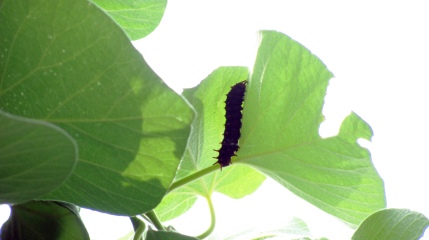
Photo: Beate Ankjaer-Jensen. Pipevine Swallowtail caterpillar.
I am happy to report that there have been several sightings in the garden this summer of eggs, caterpillars, and the adult butterfly of this species.
Humans enjoy the fields and gardens as well, and wildlife and flower photographers are especially thrilled to have an opportunity for such easy access to so many beautiful flowers and the insects they attract. One of those photographers is Edward Episcopo.
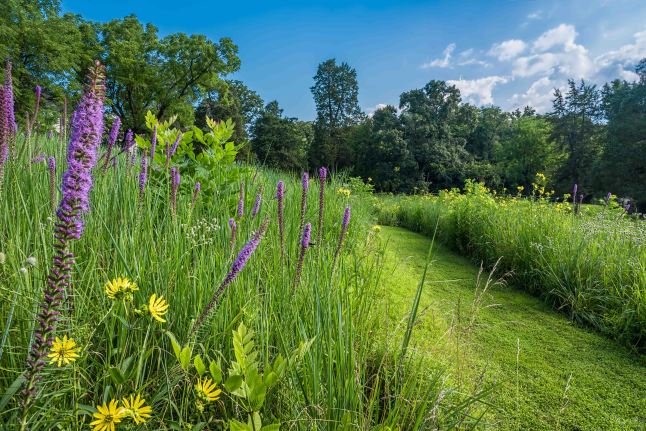
Photo: Edward Episcopo. Paths through the meadows allow you to see plants and insects up close.
Ed is especially interested in macro-photography; this is photography that produces photographs of small items that make them look larger than life-size. He has been coming to our gardens for several years, and has shared some of his photographs with us. I hope you enjoy the following selections and that they inspire you to come visit the meadows and other areas of the grounds where blooms and wildlife abound.
I want to extend a special thank you to Dr. Joella Killian, Biology professor at University of Mary Washington for help with identifying the various insects seen in the pictures.
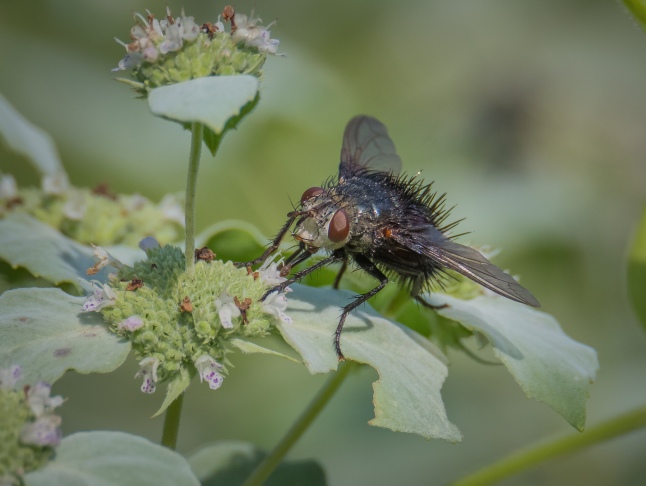
Photo: Edward Episcopo. Thick-headed fly.
This Tachinid fly, Tachinidae, seen here on a clustered mountain mint, – Pycnanthemum muticum, is a fly that lays parasitic eggs on caterpillars. The details seen in the picture is quite astonishing. Who knew that flies were covered in hairy bristles?

Photo: Edward Episcopo. Thick-headed fly.
This adult Thick-headed fly, of Conopidae family, is taking nectar from flowers, but the larva are parasites of wasps, bees, ants, crickets, and cockroaches.
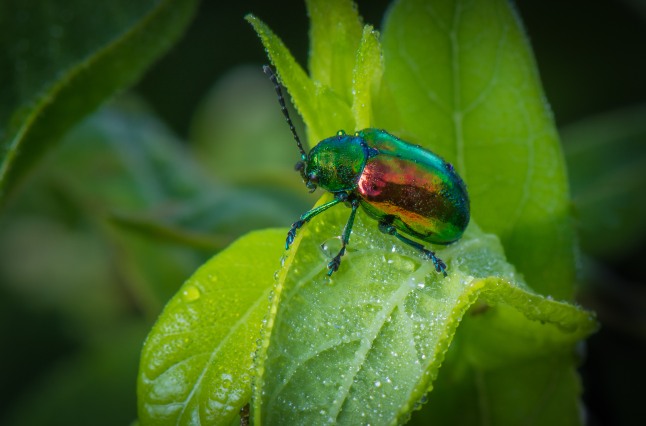
Photo: Edward Episcopo. Dogbane beetle.
This beautiful iridescent bug, the Dogbane beetle, Chrysochus auratus, is found across the U.S. continent where it feeds on various plants, including the common milkweed, Asclepias syriaca, which is abundant in our fields.
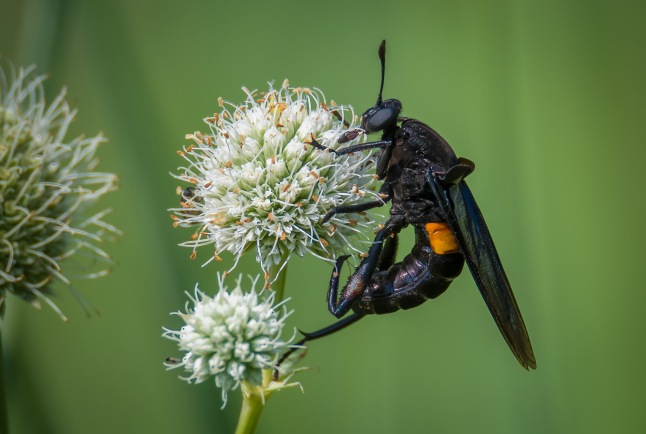
Photo: Edward Episcopo. Mydas fly.
Mydas fly, Mydidae, our largest fly, is enjoying the nectar on the rattlesnake master flower, Eryngium yuccifolium.
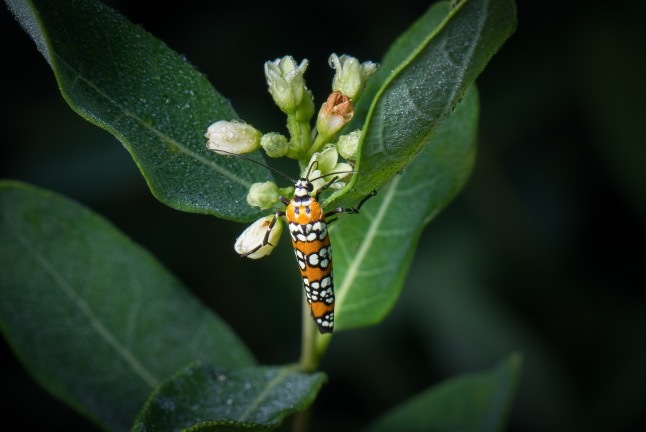
Photo: Edward Episcopo.
The Ailanthus Webworm moth, Atteva punctella – is a pretty little moth enjoying the nectar from a common milkweed, Asclepias syriaca flower. The larval host plant is the paradise tree, Simarouba glauca, native to South Florida and the American tropics.
Another tree, called tree-of-heaven, Ailanthus altissima, originally from China, has been widely introduced and naturalized, and Atteva punctella, now also identified as Atteva aurea, has been able to adapt to this new host plant, giving rise to its common name, the “ailanthus webworm”.
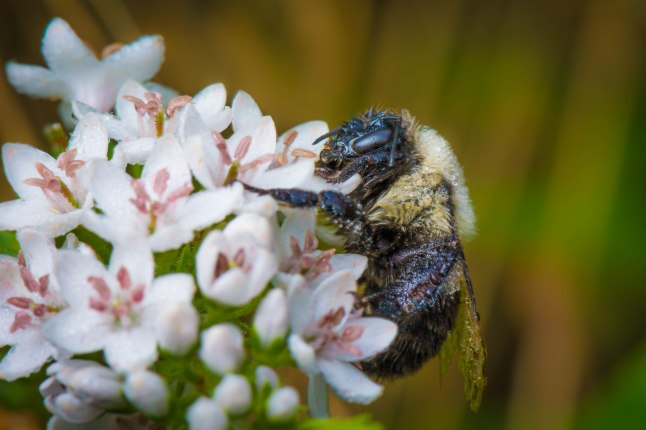
Photo: Edward Episcopo. A wet bumble bee resting on a flower.
This bumble bee, Bombus, got caught in the sprinklers, and water highlights the fuzzy “fur” on the body.
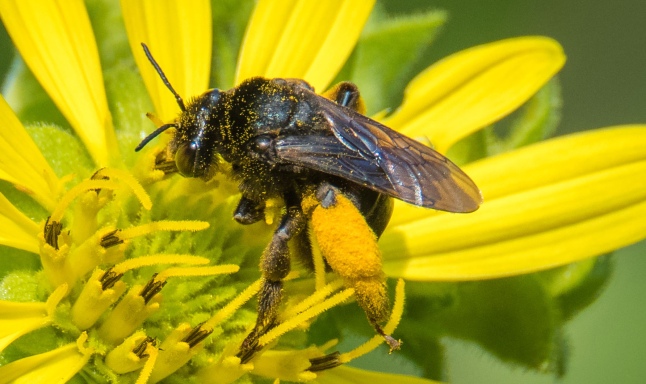
Photo: Edward Episcopo. Bee covered in pollen grains.
I cropped this image so we can see the individual pollen grains and the pollen sacs on the legs of a bee on the cup-plant, Silphium perfoliatum.
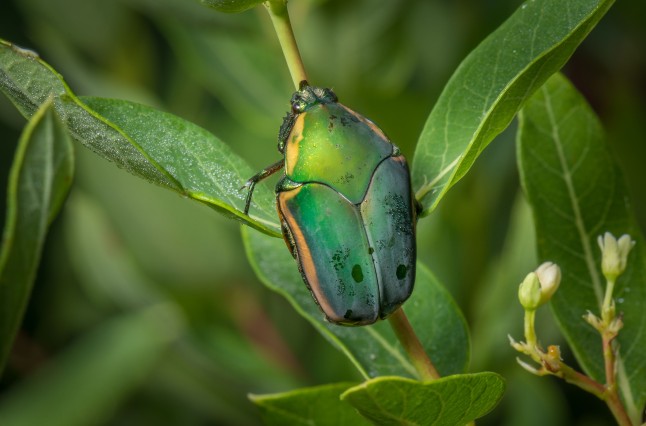
Photo: Edward Epicsope. Green June beetle.
The Green June beetle, Cotinis nitida, is seen here on a common milkweed plant, Asclepias syriaca, but their favorite food is fruits of many kinds, including grapes, peaches, raspberry, blackberry, apple, and pear. They also frequently feed on the sap of oak, maple, and other trees, and on the growing ears of corn. The larvae feed on decaying organic matter in the soil or in well-rotted manure or compost piles.
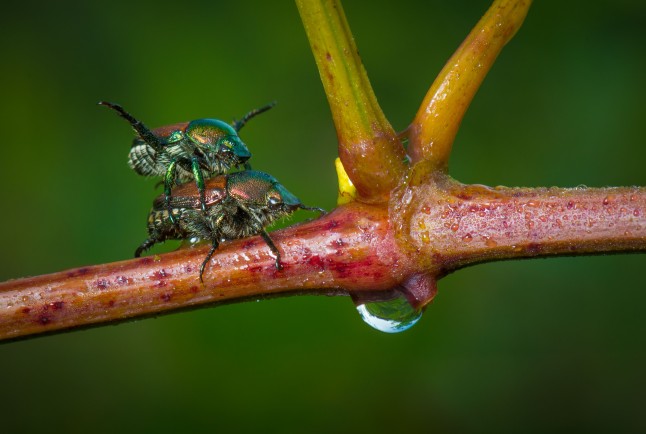
Photo: Edward Episcope. Japanese beetles.
Most gardeners will recognize these as Japanese beetles, Popillia japonica. Seen through Edward Episcope’s lens we can for a minute forget their destructiveness and enjoy the beauty of the photograph itself. I shudder to think of the damage the offspring of this mating pair will do to the roses next year.

Photo: Edward Episcope. Eastern Tiger Swallowtail.
The Japanese beetle might be reviled by most, but we can all agree that butterflies are welcome in the garden. This Eastern Tiger Swallowtail, Papilo glaucus, enjoying a meal of nectar on Liatris, is Virginia’s official state butterfly.

Photo: Edward Episcope. American Lady butterfly.
Mr. Episcope captured the face of the American Lady butterfly, Vanessa virginiensis, perfectly in this picture. The American Lady is found over the southern half and eastern half of the US.
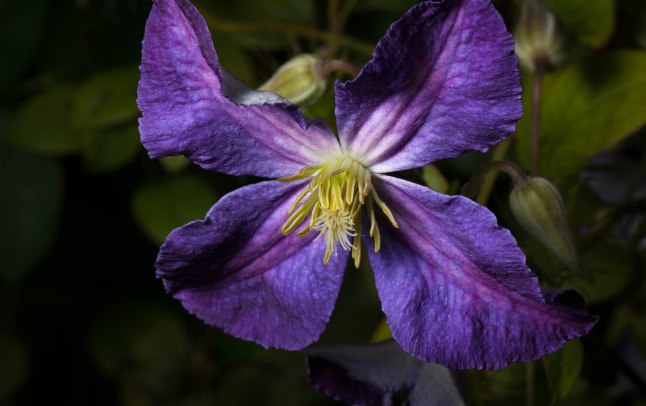
Photo: Edward Episcopo. Clematis Jackmanii flower.
Insects love flowers for their pollen and nectar. Edward Episcope uses his camera to capture details that can escape the naked eye. The petals on this clematis flower are quite showy; their main job is to attract insects to transfer pollen from one flower to another. The lighter color towards the center acts like a magnet to attract the insects to the stamens and stigma in the center, ensuring pollination and seed production.

Photo: Edward Episcopo. Orange Blackberry lily.
Iris domestica, commonly known as Leopard lily, or Blackberry lily, is an ornamental plant in the Iridaceae family. The flowers last just one day, then forming large green seed-pods. When mature the seed-pods open to show a cluster of black shiny “berries.” If you look closely, you can see small bees enjoying nectar and pollen.
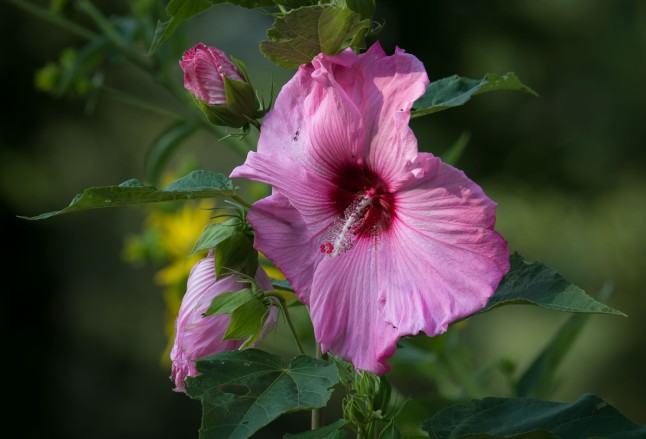
Photo: Edward Episcopo. Hibiscus flower.
Hibiscus, Hibiscus mutabilis , flowers are short-lived as well, generally lasting for a day or two in most varieties. The bloom opens in early morning and wilts by late afternoon. The petals drop off, leaving the seed capsule behind. This hardy hibiscus starts blooming in mid-summer and the colorful show goes on until frost.
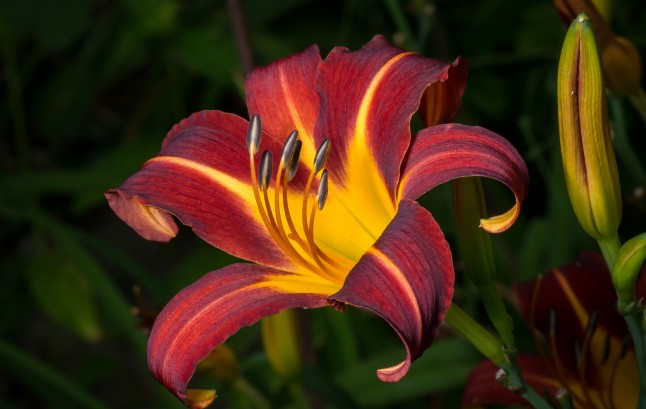
Photo: Edward Episcopo. Daylily.
Of all the short-lived flowers, the Day Lily, Hemerocallis, is perhaps the best known, and best loved of them all. There are hundreds, perhaps thousands, of varieties, each flower lasting just one day. This bloom was perfectly captured, frozen in time for us to enjoy whenever we wish.
I hope these pictures have inspired you to come take a closer look in our gardens and meadows. The grounds at Gari Melchers Home and Studio are open during regular museum hours for your enjoyment. Please check in at the Visitor Center when you arrive.

Beautifully said and beautifully done!
Bravo, Susan Pates
Thank you Susan, this is a beautiful place so easy to share!